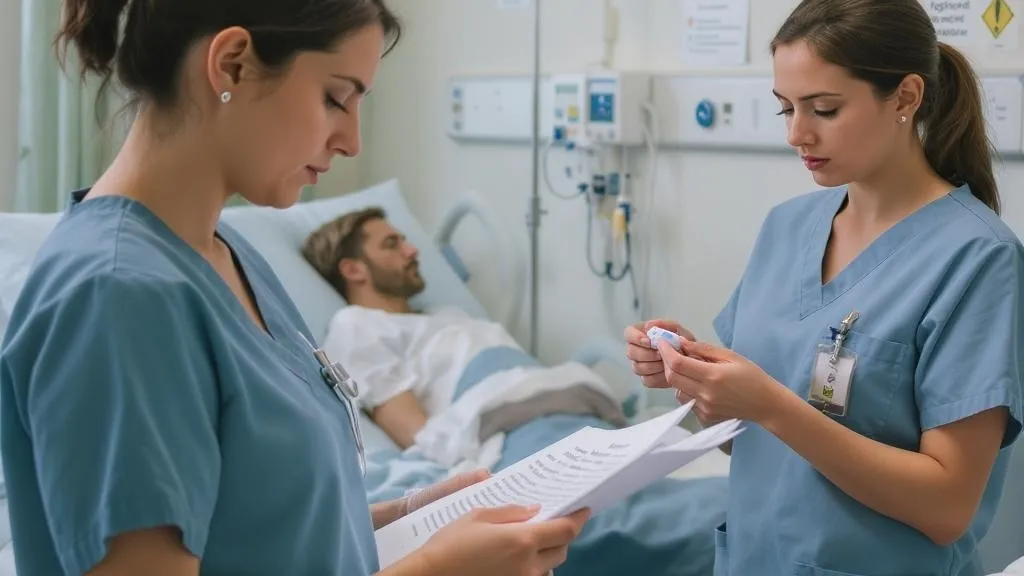Part 1: Understanding the Landscape of Nursing Errors and Prioritizing Patient Safety
Date published: June 5, 2025

Nurses are the last line of defense for patients but what happens when the system fails them first?
Errors in practice don’t begin with bad intent. They begin with gaps. Gaps in clinical training. Gaps in surveillance. Gaps in the support nurses need to keep patients safe.
The National Council of State Boards of Nursing (NCSBN) has long documented the most common categories of nursing error many of which are still under-addressed in our training programs. This two-part series walks through those categories with a patient safety lens and offers practical strategies for reducing preventable harm.
Because whether you’re a nurse, educator, or clinical leader, this isn’t just about error awareness. It’s about equipping the frontline to protect lives.
Medication Errors. Medication errors remain one of the most dangerous breakdowns in nursing practice. From wrong doses to missed interactions, the consequences are often swift and serious. These errors frequently stem from common culprits: look-alike/sound-alike drugs, task overload, and insufficient pharmacological training.
Prevention strategies include double-check systems, use of barcode scanning, and cultivating a just culture where reporting near misses is not only safe but expected.
Documentation Errors. Incomplete or inaccurate documentation jeopardizes continuity of care. It also compromises legal safety for clinicians and patient safety for those we serve.
Charting errors often arise from time pressure, system fatigue, or lack of EHR training. What helps? Ongoing support in navigating digital systems, clear charting protocols, and real-time documentation practices.
Nursing Surveillance and Vigilance. The ability to recognize subtle changes in a patient’s condition is not just a soft skill it’s a life-saving one.
Breakdowns in vigilance missed assessments, delayed recognition of warning signs, or failure to escalate concerns are directly tied to Failure to Rescue events. Strengthening this domain means reinforcing early warning tools, cross-checking baseline data, and normalizing timely communication up the chain.
Clinical Judgment. Clinical judgment is the throughline that connects data to decisions. It’s how nurses synthesize patient information, weigh options, and act.
But novice nurses often enter the workforce with undeveloped clinical judgment through no fault of their own. This gap in preparation can be addressed through simulation, scenario-based training, and mentorship models that build pattern recognition and safe decision-making.
Nurses’ Role in Harm Prevention (VTE, Falls, HAI, Pressure Ulcers). Preventing harm isn’t an added task it’s central to nursing. Nurses are key to preventing complications like VTE, falls, infections, and pressure injuries.
But prevention protocols are only as effective as the training and accountability behind them. Risk assessments, proactive rounding, and patient education must be part of daily practice not occasional initiatives.
Conclusion. These five areas aren’t just where errors occur. They’re where lives are changed. By understanding the patterns and investing in training that goes beyond checklists we can equip nurses to prevent harm before it starts.
That’s why we created the Lifebeat Solutions course suite: to build the confidence, clinical readiness, and judgment today’s nurses need to protect their patients.
👉 Ready to take the next step toward safer care? Explore our evidence-based, practice-focused training at Lifebeat Solutions: https://lifebeatsolutions.com/ And stay tuned for Part 2 where we’ll dig into the remaining categories and continue the conversation on protecting lives.
Visit our website https://drjuliesiemers.com/lifebeat-solutions/ and book a consultation with us. For inquiries, you can also reach out via email at [email protected].
#PatientSafety #Nursing #Healthcare #NurseLeadership #HarmPrevention
Part 1: Understanding the Landscape of Nursing Errors and Prioritizing Patient Safety
Date published: June 5, 2025

Nurses are the last line of defense for patients but what happens when the system fails them first?
Errors in practice don’t begin with bad intent. They begin with gaps. Gaps in clinical training. Gaps in surveillance. Gaps in the support nurses need to keep patients safe.
The National Council of State Boards of Nursing (NCSBN) has long documented the most common categories of nursing error many of which are still under-addressed in our training programs. This two-part series walks through those categories with a patient safety lens and offers practical strategies for reducing preventable harm.
Because whether you’re a nurse, educator, or clinical leader, this isn’t just about error awareness. It’s about equipping the frontline to protect lives.
Medication Errors. Medication errors remain one of the most dangerous breakdowns in nursing practice. From wrong doses to missed interactions, the consequences are often swift and serious. These errors frequently stem from common culprits: look-alike/sound-alike drugs, task overload, and insufficient pharmacological training.
Prevention strategies include double-check systems, use of barcode scanning, and cultivating a just culture where reporting near misses is not only safe but expected.
Documentation Errors. Incomplete or inaccurate documentation jeopardizes continuity of care. It also compromises legal safety for clinicians and patient safety for those we serve.
Charting errors often arise from time pressure, system fatigue, or lack of EHR training. What helps? Ongoing support in navigating digital systems, clear charting protocols, and real-time documentation practices.
Nursing Surveillance and Vigilance. The ability to recognize subtle changes in a patient’s condition is not just a soft skill it’s a life-saving one.
Breakdowns in vigilance missed assessments, delayed recognition of warning signs, or failure to escalate concerns are directly tied to Failure to Rescue events. Strengthening this domain means reinforcing early warning tools, cross-checking baseline data, and normalizing timely communication up the chain.
Clinical Judgment. Clinical judgment is the throughline that connects data to decisions. It’s how nurses synthesize patient information, weigh options, and act.
But novice nurses often enter the workforce with undeveloped clinical judgment through no fault of their own. This gap in preparation can be addressed through simulation, scenario-based training, and mentorship models that build pattern recognition and safe decision-making.
Nurses’ Role in Harm Prevention (VTE, Falls, HAI, Pressure Ulcers). Preventing harm isn’t an added task it’s central to nursing. Nurses are key to preventing complications like VTE, falls, infections, and pressure injuries.
But prevention protocols are only as effective as the training and accountability behind them. Risk assessments, proactive rounding, and patient education must be part of daily practice not occasional initiatives.
Conclusion. These five areas aren’t just where errors occur. They’re where lives are changed. By understanding the patterns and investing in training that goes beyond checklists we can equip nurses to prevent harm before it starts.
That’s why we created the Lifebeat Solutions course suite: to build the confidence, clinical readiness, and judgment today’s nurses need to protect their patients.
👉 Ready to take the next step toward safer care? Explore our evidence-based, practice-focused training at Lifebeat Solutions: https://lifebeatsolutions.com/ And stay tuned for Part 2 where we’ll dig into the remaining categories and continue the conversation on protecting lives.
Visit our website https://drjuliesiemers.com/lifebeat-solutions/ and book a consultation with us. For inquiries, you can also reach out via email at [email protected].
#PatientSafety #Nursing #Healthcare #NurseLeadership #HarmPrevention
Monitoring and Reporting
Collecting and analyzing data on safety incidents to identify trends and areas for improvement.
Establishing Standards
Developing and enforcing safety protocols to ensure consistency and quality across healthcare organizations.
Promoting Education
Providing training and resources to healthcare professionals to enhance their knowledge and skills in patient safety.
Encouraging Transparency
Creating a culture where healthcare workers feel empowered to report errors and near-misses without fear of retribution.

Driving Innovation
Leveraging technology and research to implement cutting-edge solutions for patient safety challenges.

